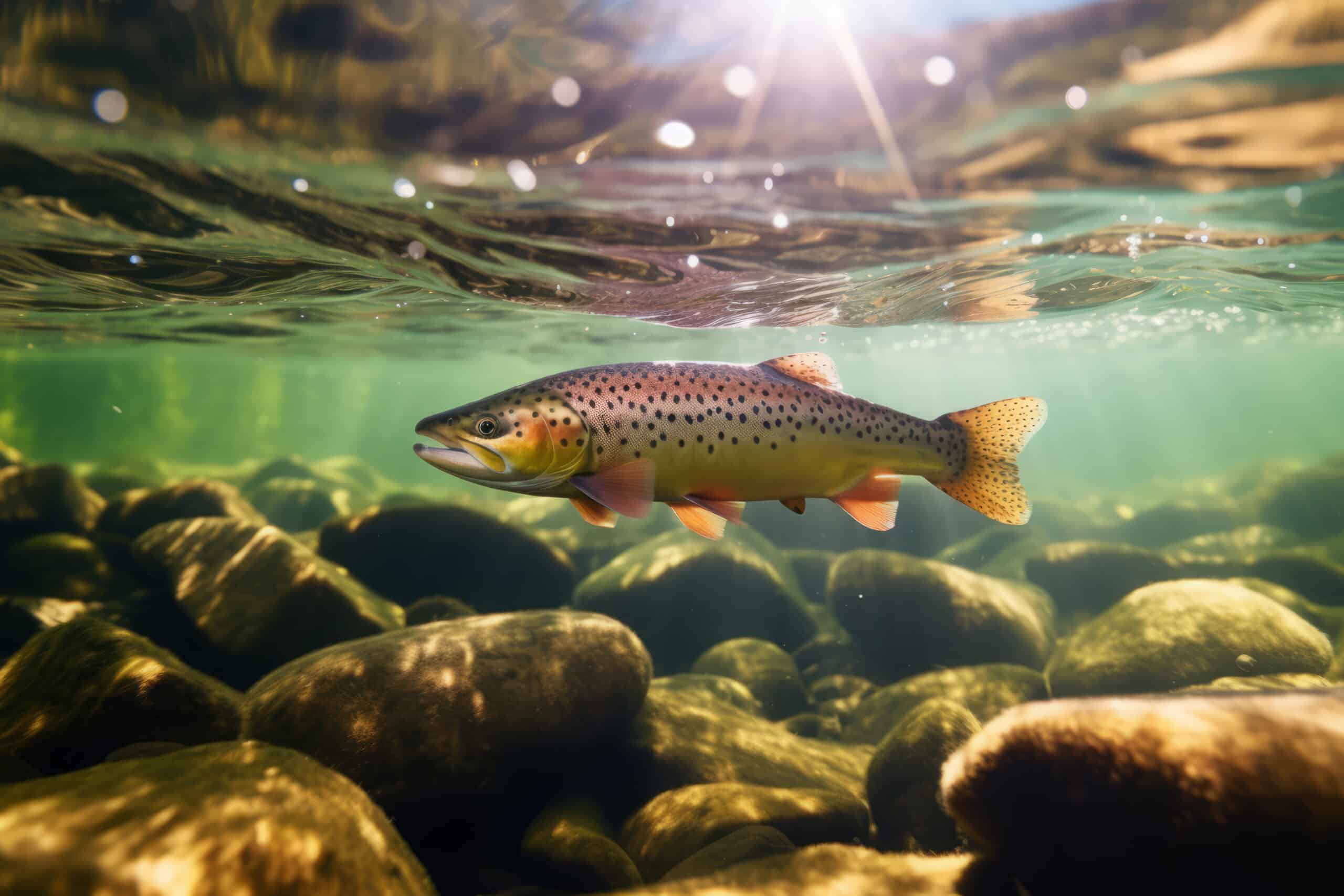Are Trout Top or Bottom Feeders?
Key Takeaways
- Trout feeding behavior is influenced by various factors such as water depth, temperature, and time of day.
- Trout can switch between feeding near the surface and feeding at the bottom, depending on these factors.
- While trout may primarily feed near or just off the bottom, they also exhibit feeding behavior near the surface, especially during the morning and evening.
In the world of fishing, understanding the feeding habits of different fish species is crucial for success. When it comes to trout, a common question that arises is whether they are top or bottom feeders. To find the answer, we need to explore various sources and consider different factors that influence trout feeding behavior.
Exploring Different Perspectives
Let’s begin by examining different viewpoints from reputable sources. According to Trout Resource, approximately 75% of a trout’s diet comes from food near or just off the bottom. This suggests that trout are primarily bottom feeders, focusing on prey that resides within a couple of feet from the bottom.
On the other hand, Outdoors Skilled mentions that trout primarily feed closer to the surface in shallow waters like streams or rivers. However, if they inhabit deeper waters such as large lakes or oceans, trout are more likely to feed at the bottom. This perspective suggests that trout’s feeding behavior depends on the depth of the water they inhabit.
Another source, also from Outdoors Skilled, highlights that trout are opportunistic feeders. Their feeding behavior can vary based on the depth of the water and surrounding temperature. In deeper waters, trout can be bottom feeders, while in shallow waters, they are more likely to feed closer to the surface.
Moreover, Just a Fish Guy explains that trout feeding behavior varies depending on the time of day and water temperature. In the morning and evening, trout tend to feed near the surface. However, during the day, they move to deeper water to avoid the heat. This suggests that trout can feed both at the top and bottom of the water column.
Lastly, 2 Guys and a River emphasizes that trout feeding behavior can be observed on both the top and bottom. This aligns with the idea that trout’s feeding habits are not limited to a singular behavior.
Understanding the Factors
From the information provided, it is clear that trout feeding behavior is influenced by various factors. One of the key factors is the depth of the water they inhabit. When trout reside in shallow waters like streams or rivers, they are more likely to feed closer to the surface. However, in deeper waters such as large lakes or oceans, trout tend to be bottom feeders.
Water temperature also plays a role in trout feeding behavior. Trout are known to be more active in cooler water, and they may move to deeper areas during the day to avoid excessive heat. This behavior suggests that they can switch between feeding near the surface and feeding at the bottom, depending on the time of day and temperature.
The Conclusion
Based on the information gathered, it is clear that trout cannot be classified solely as top or bottom feeders. Their feeding behavior is dynamic and dependent on various factors such as water depth, temperature, and time of day. While they may primarily feed near or just off the bottom, trout also exhibit feeding behavior near the surface, especially during the morning and evening.
As an angler, it is important to understand the nuances of trout feeding habits in order to effectively target them. By considering the factors that influence their behavior, you can adapt your fishing techniques accordingly.
Related Websites:
FAQs:
Q: What are the best techniques for targeting top feeding trout?
To target top feeding trout, it is recommended to use techniques and lures that mimic aquatic insects and surface-dwelling organisms. This can include dry flies, nymphs, or emergers. By imitating the food sources that trout typically prey on near the water’s surface, you increase your chances of enticing them to bite.
Q: What baits and techniques are effective for attracting bottom feeding trout?
When targeting bottom feeding trout, it is important to use baits and techniques that imitate their preferred diet of bottom-dwelling organisms like crustaceans and nymphs. This can include using weighted nymphs, scud patterns, or small crayfish imitations. By presenting these baits near the bottom of the water column, you can increase your chances of enticing bottom feeding trout.
Q: How do water temperature and location influence trout’s feeding habits?
Water temperature and location play a significant role in influencing trout’s feeding habits. Trout are cold-blooded creatures, and their metabolism is directly affected by water temperature. In colder water, their metabolism slows down, leading to reduced feeding activity. Additionally, trout tend to seek out areas with optimal oxygen levels and cover for protection, which can also influence their feeding behavior. Understanding these factors can help anglers determine the best times and locations to target trout.
Q: How do trout adjust their feeding behavior based on available food sources?
Trout are opportunistic feeders, and they adjust their feeding behavior based on the availability of food sources. If there is an abundance of top-dwelling organisms like insects, trout may predominantly engage in top feeding. Conversely, if bottom-dwelling organisms like crustaceans are more abundant, trout may focus on bottom feeding. By understanding the balance and adapting your fishing techniques accordingly, you can increase your chances of success in trout fishing.
Q: How can I maximize my success in trout fishing?
To maximize your success in trout fishing, it is recommended to experiment with different fishing methods and techniques. This includes targeting both top feeding and bottom feeding tendencies of trout. By understanding their feeding behavior, using appropriate lures or baits, and considering factors like water temperature and location, you can increase your chances of catching trout. Additionally, observing and learning from experienced anglers or local fishing guides can provide valuable insights and tips to enhance your fishing skills.






